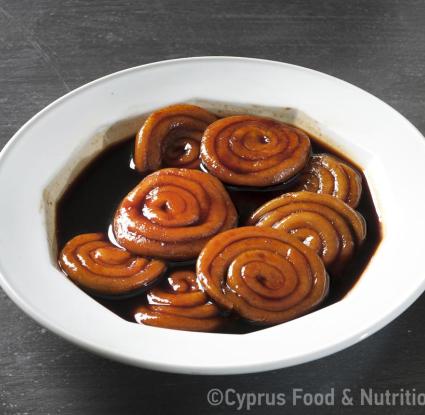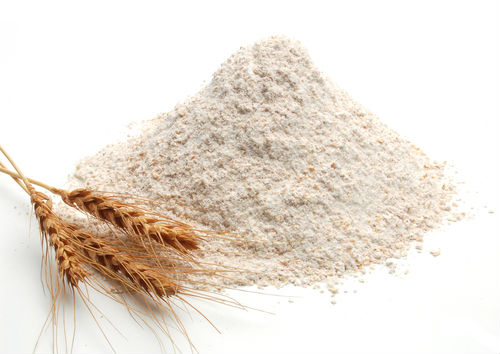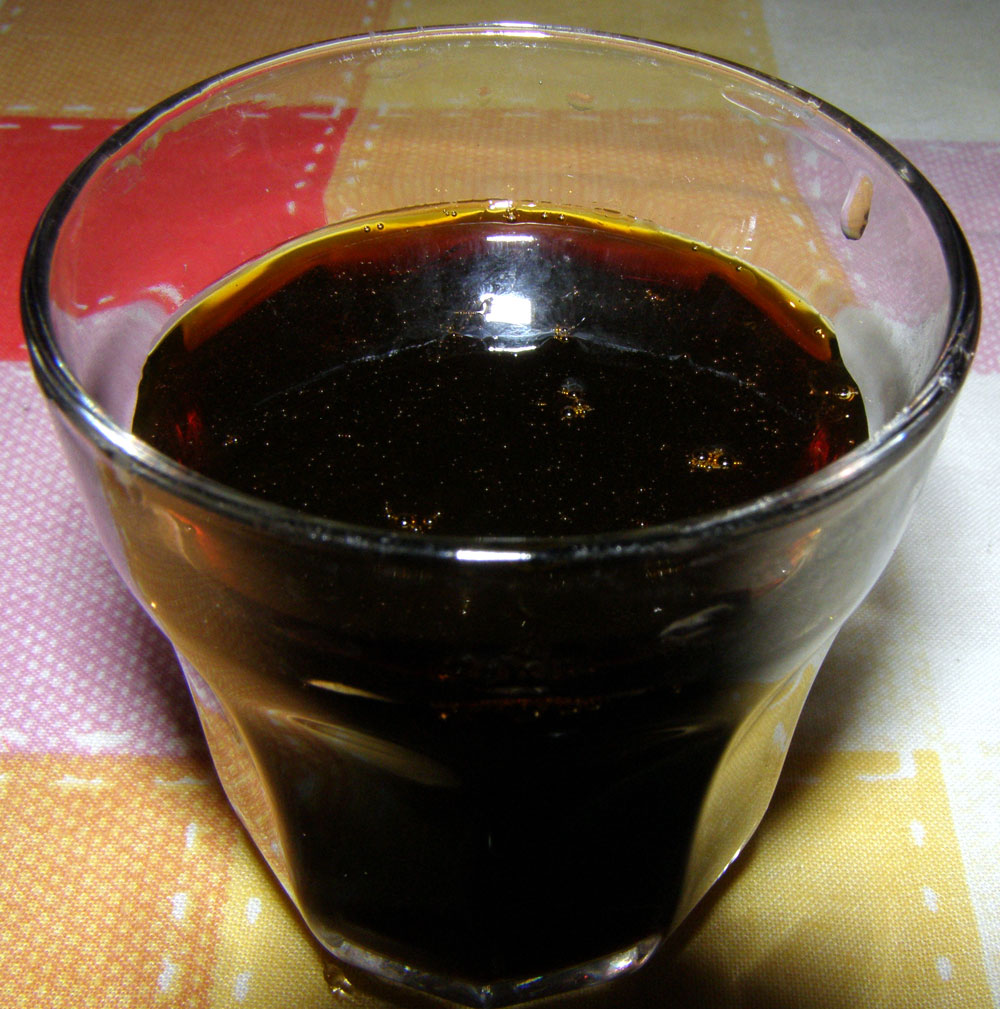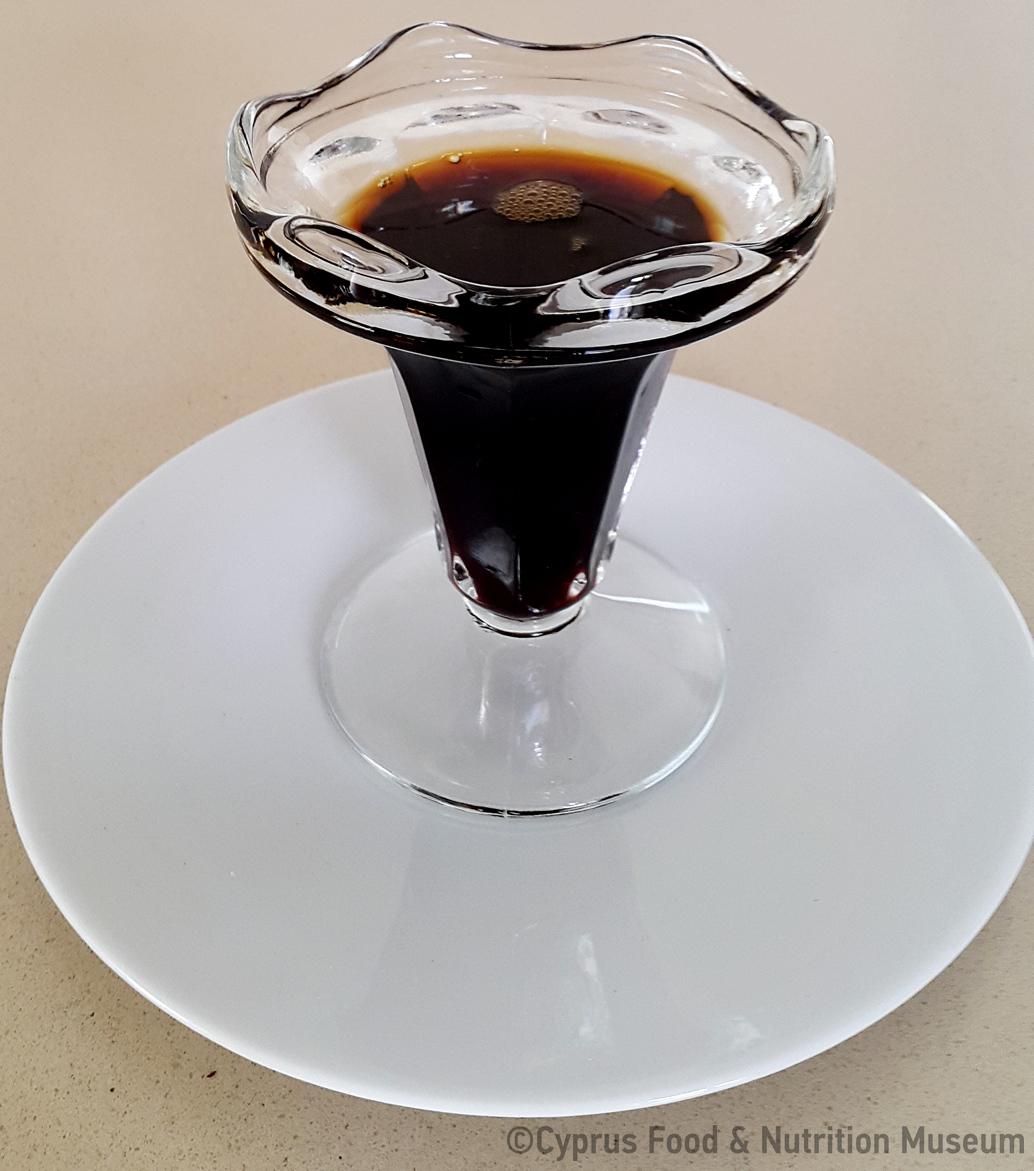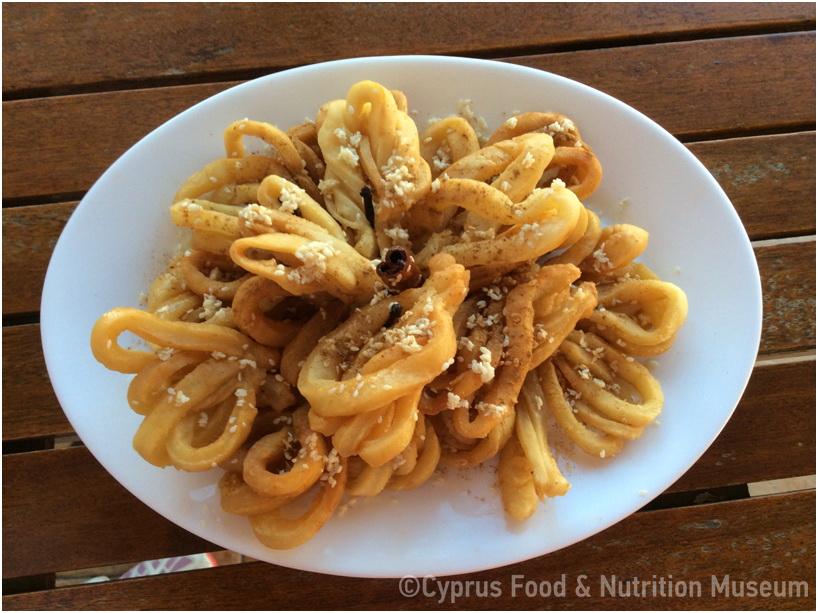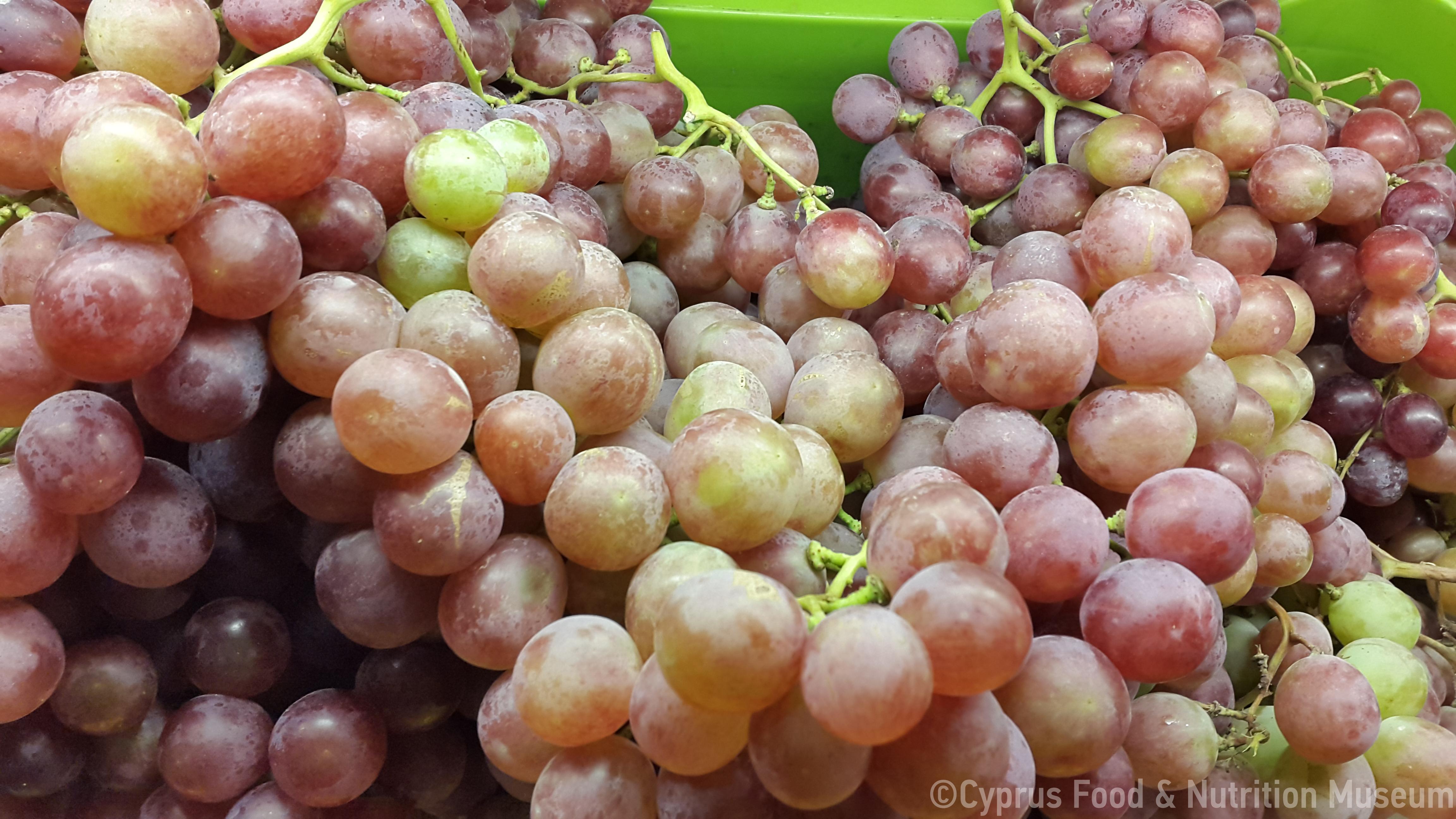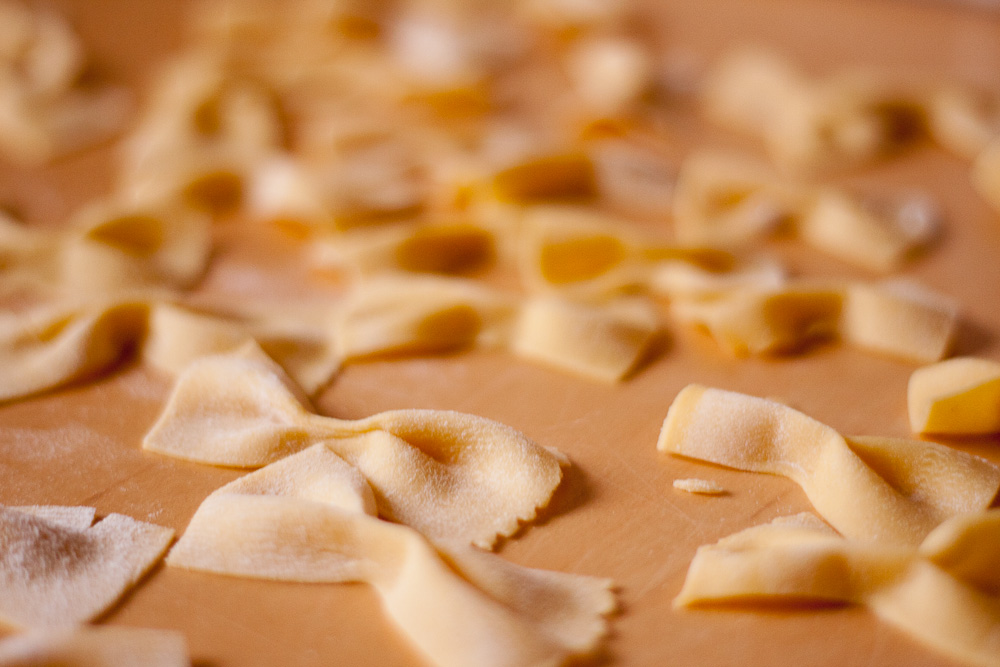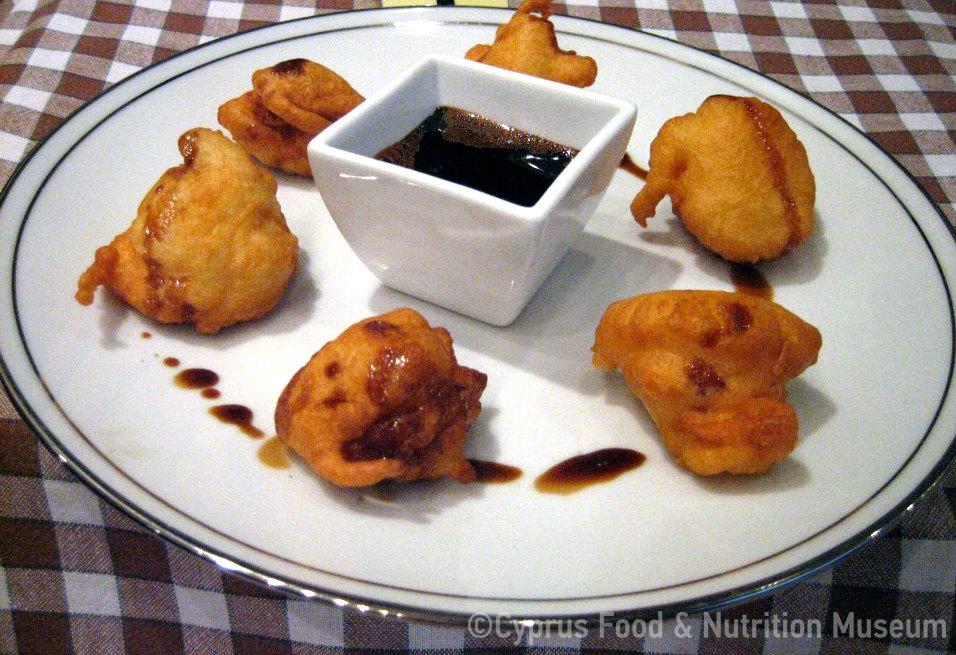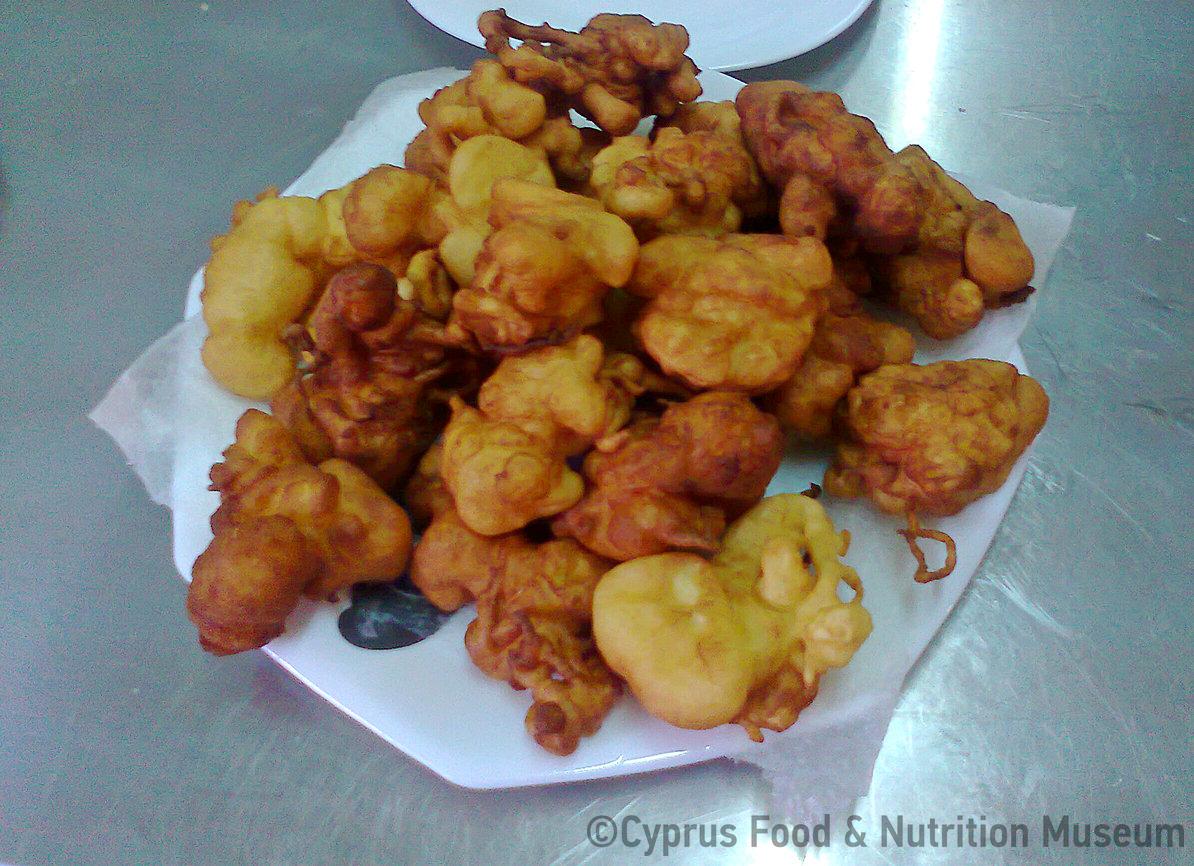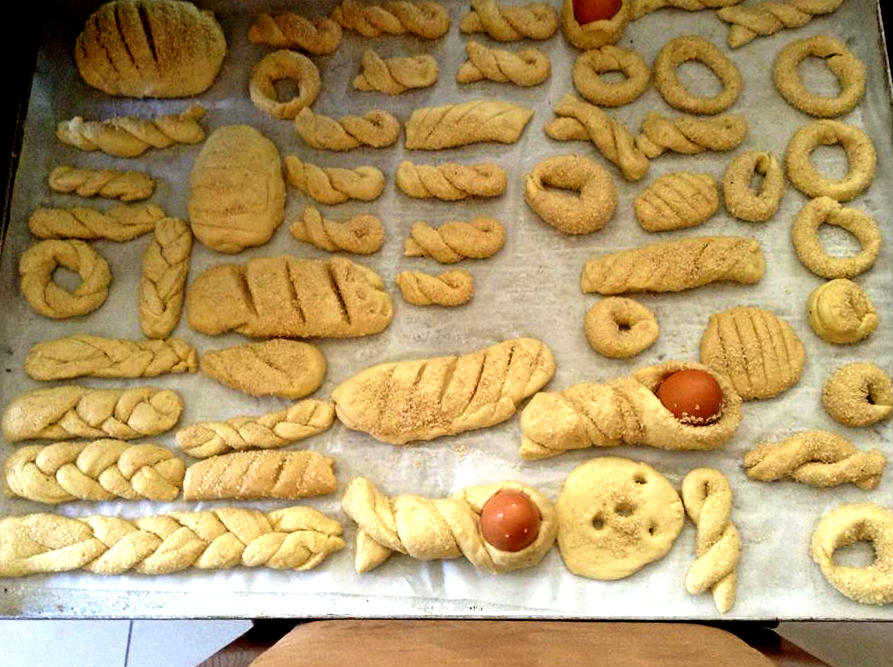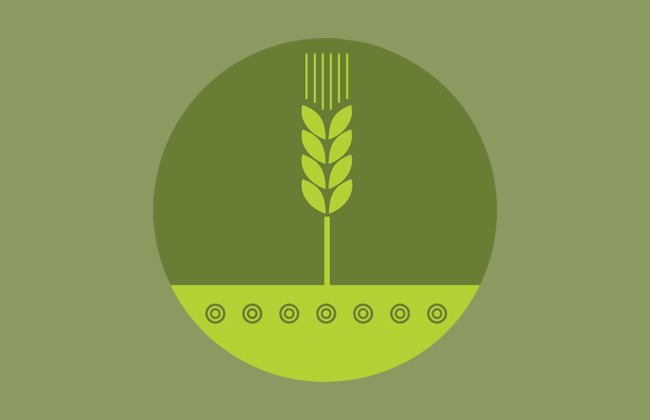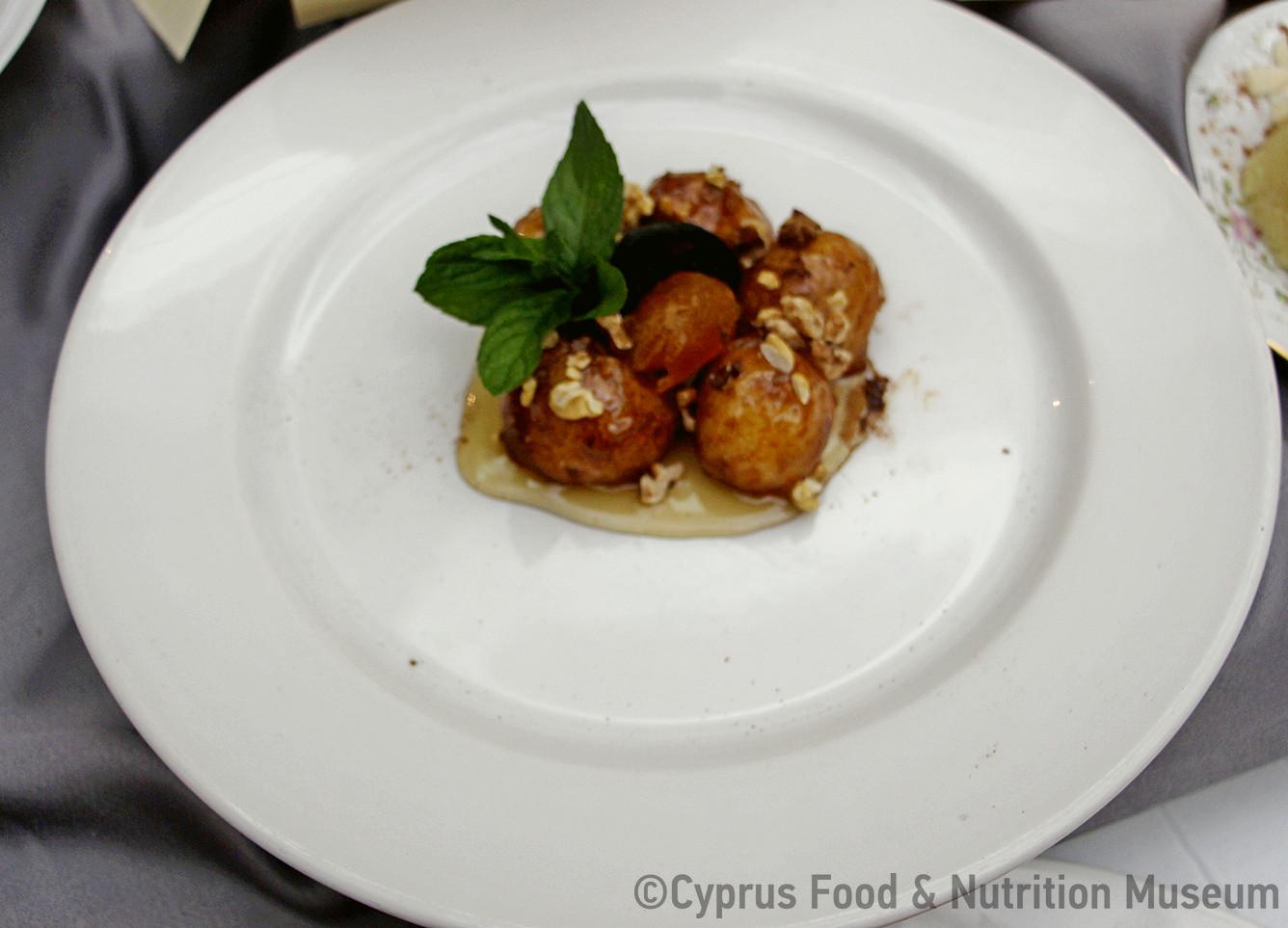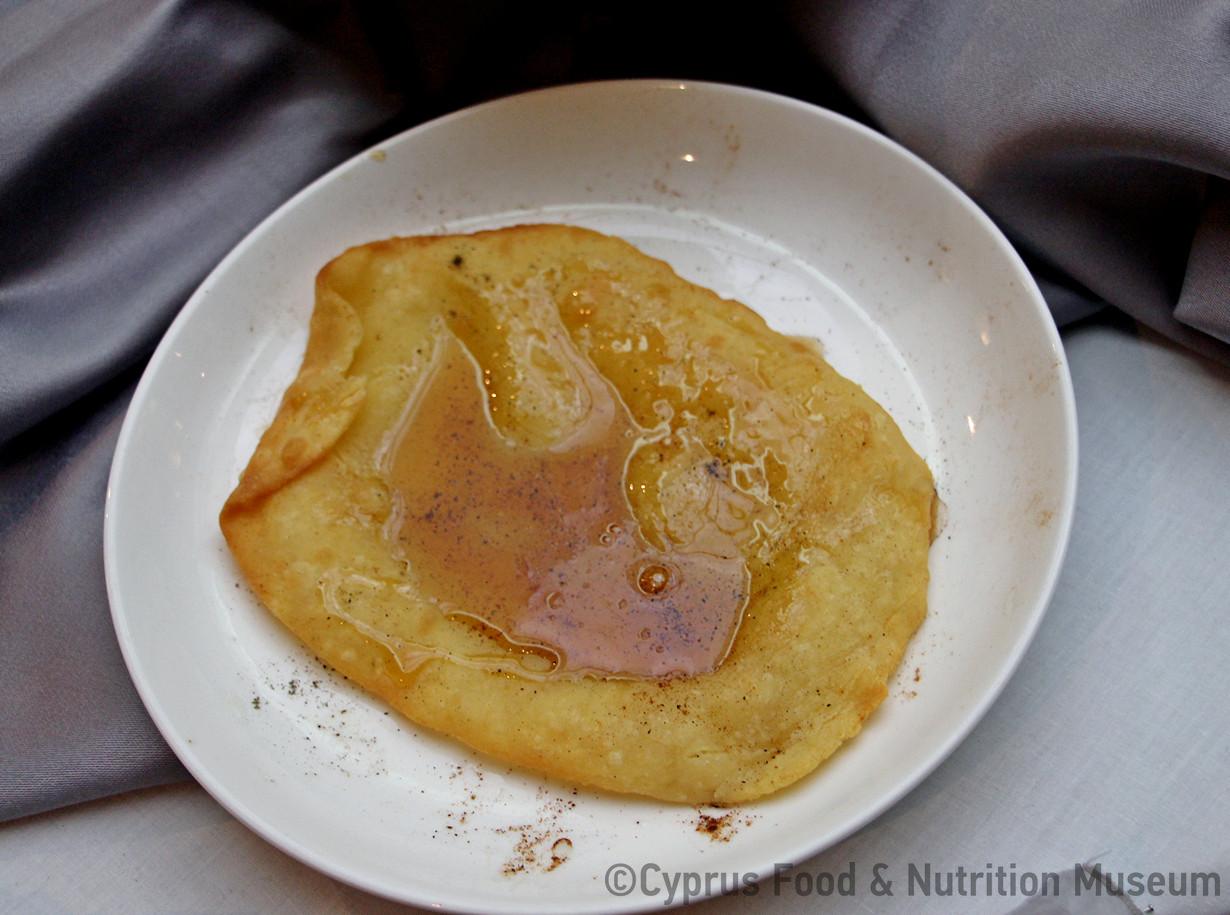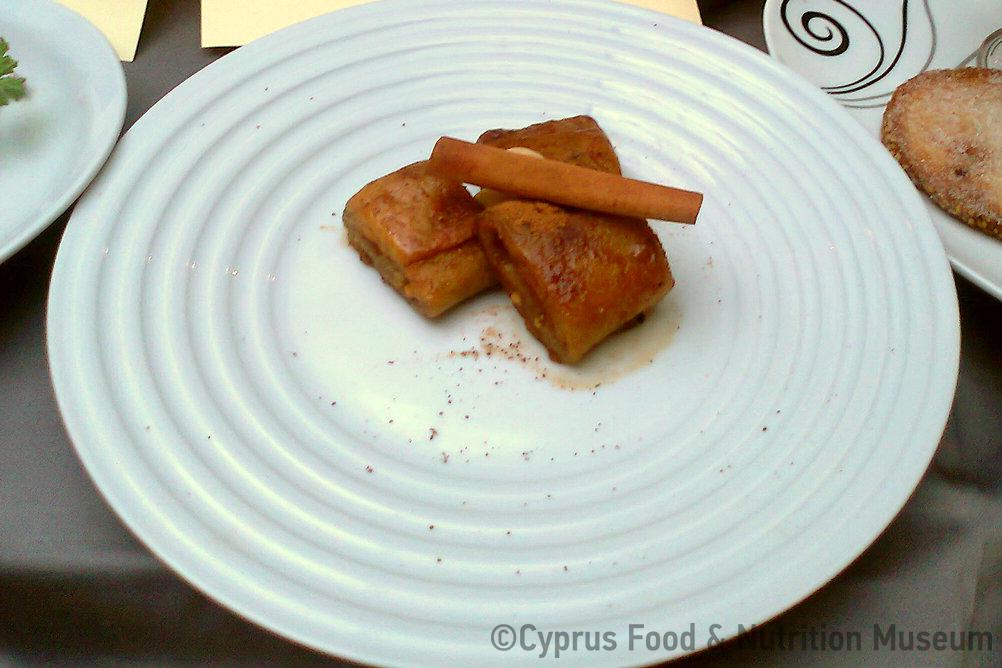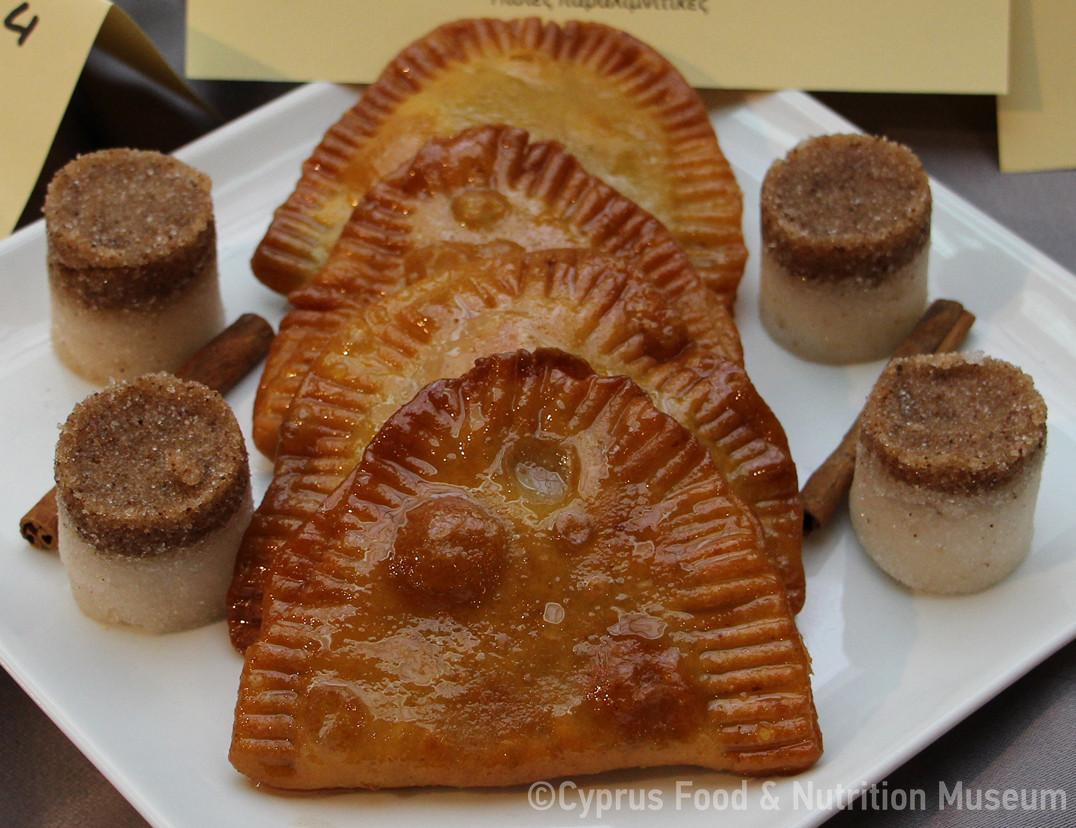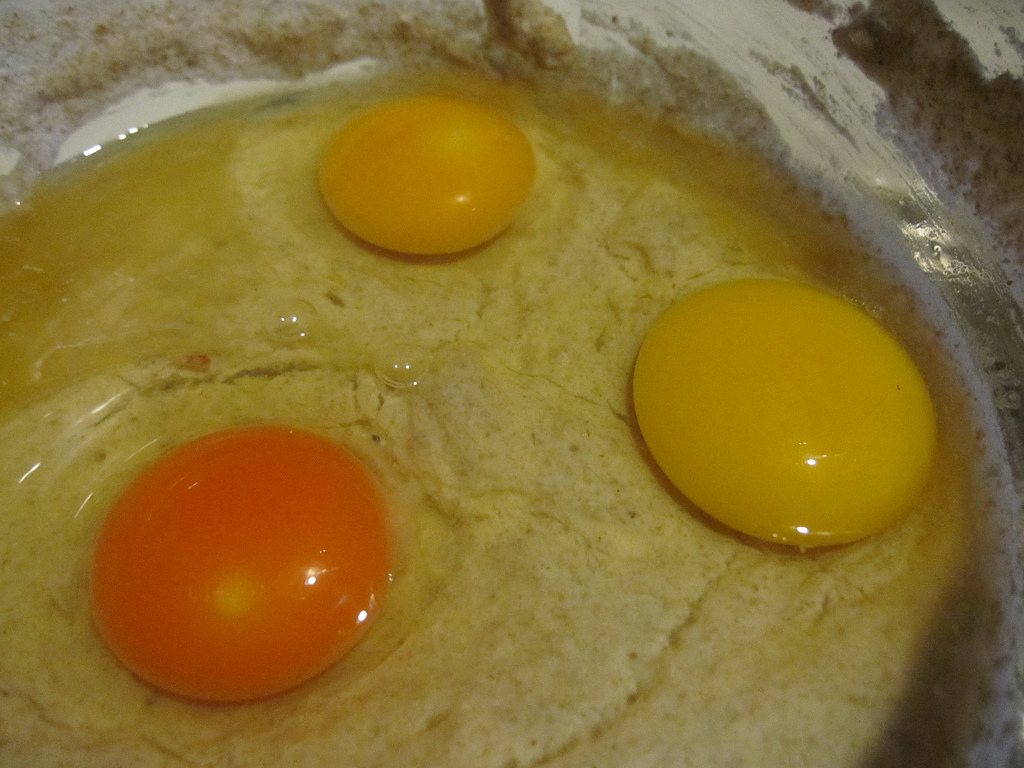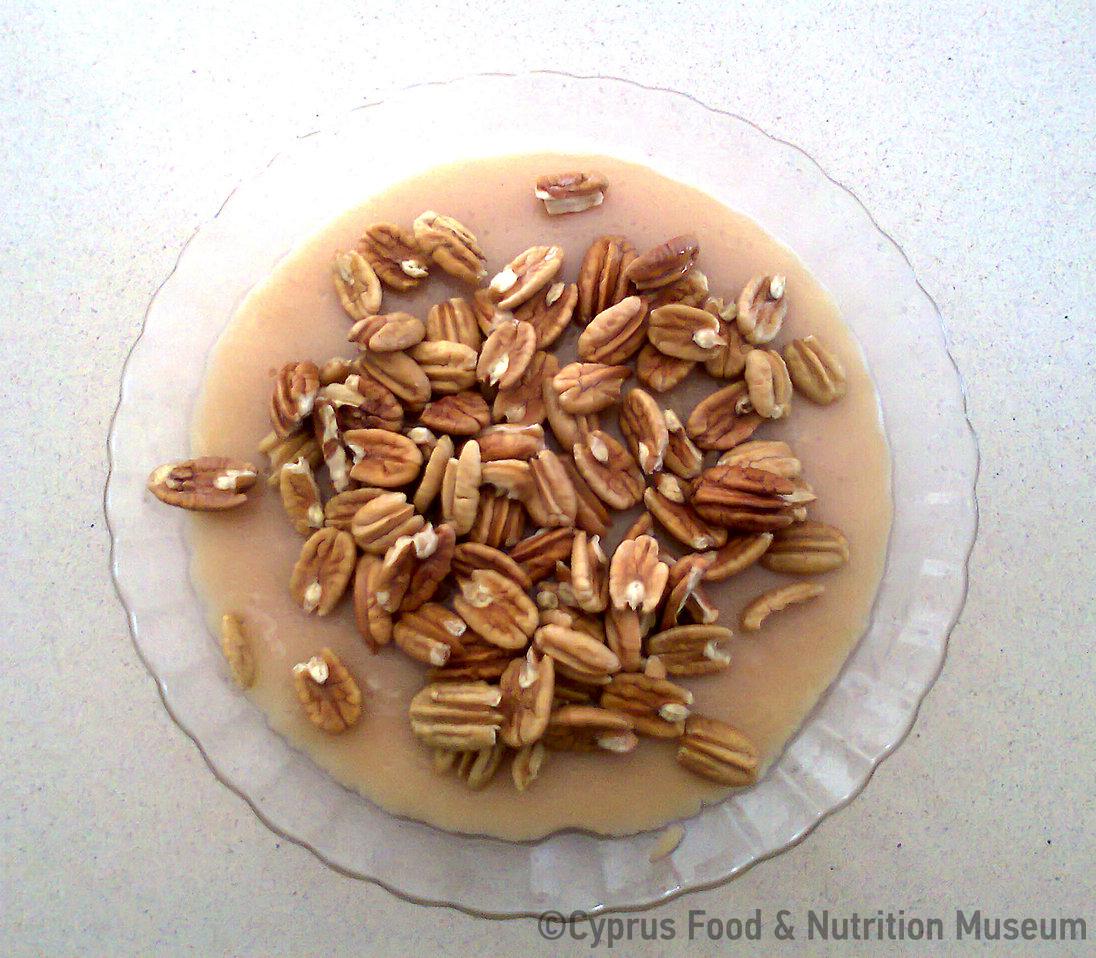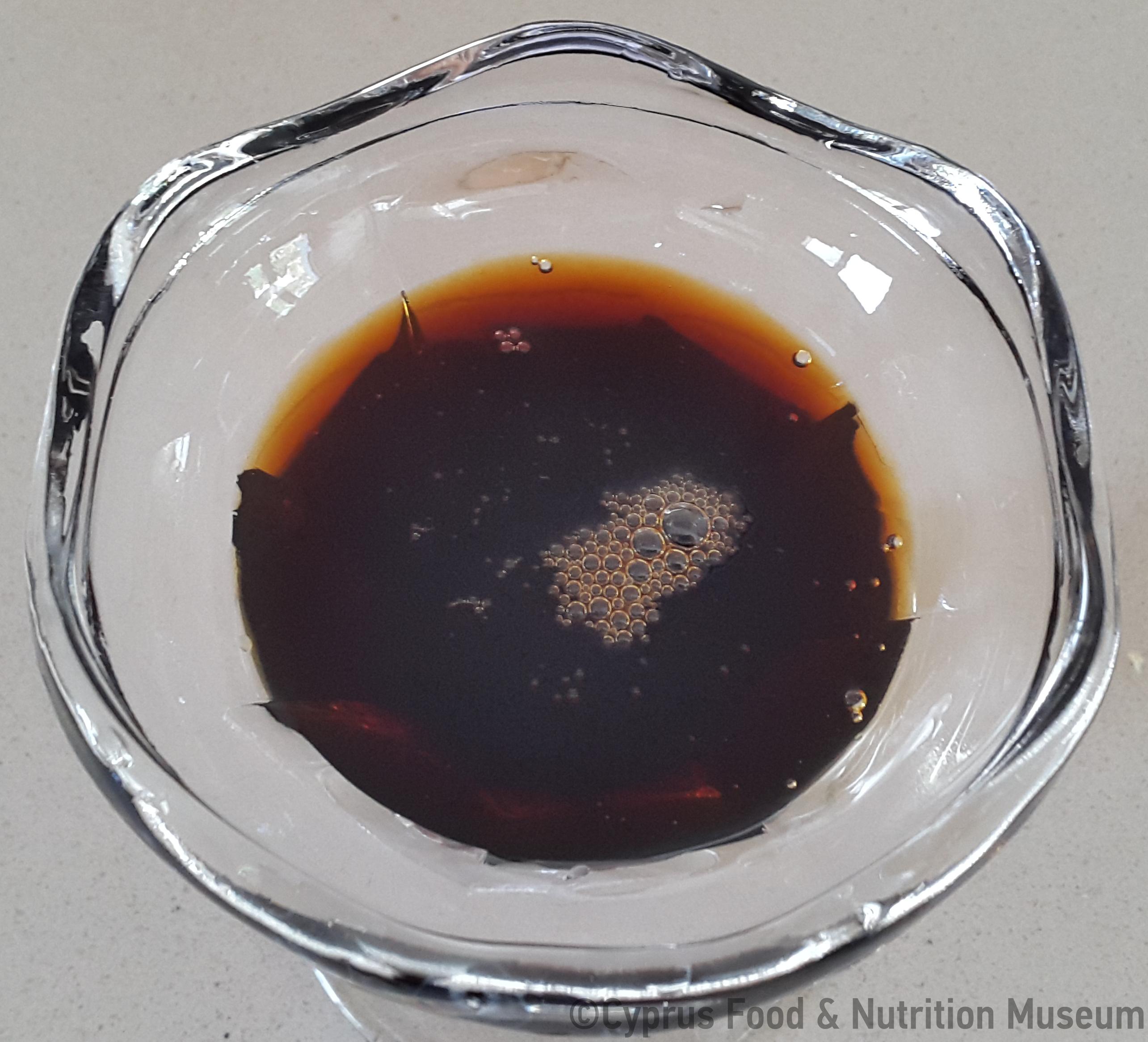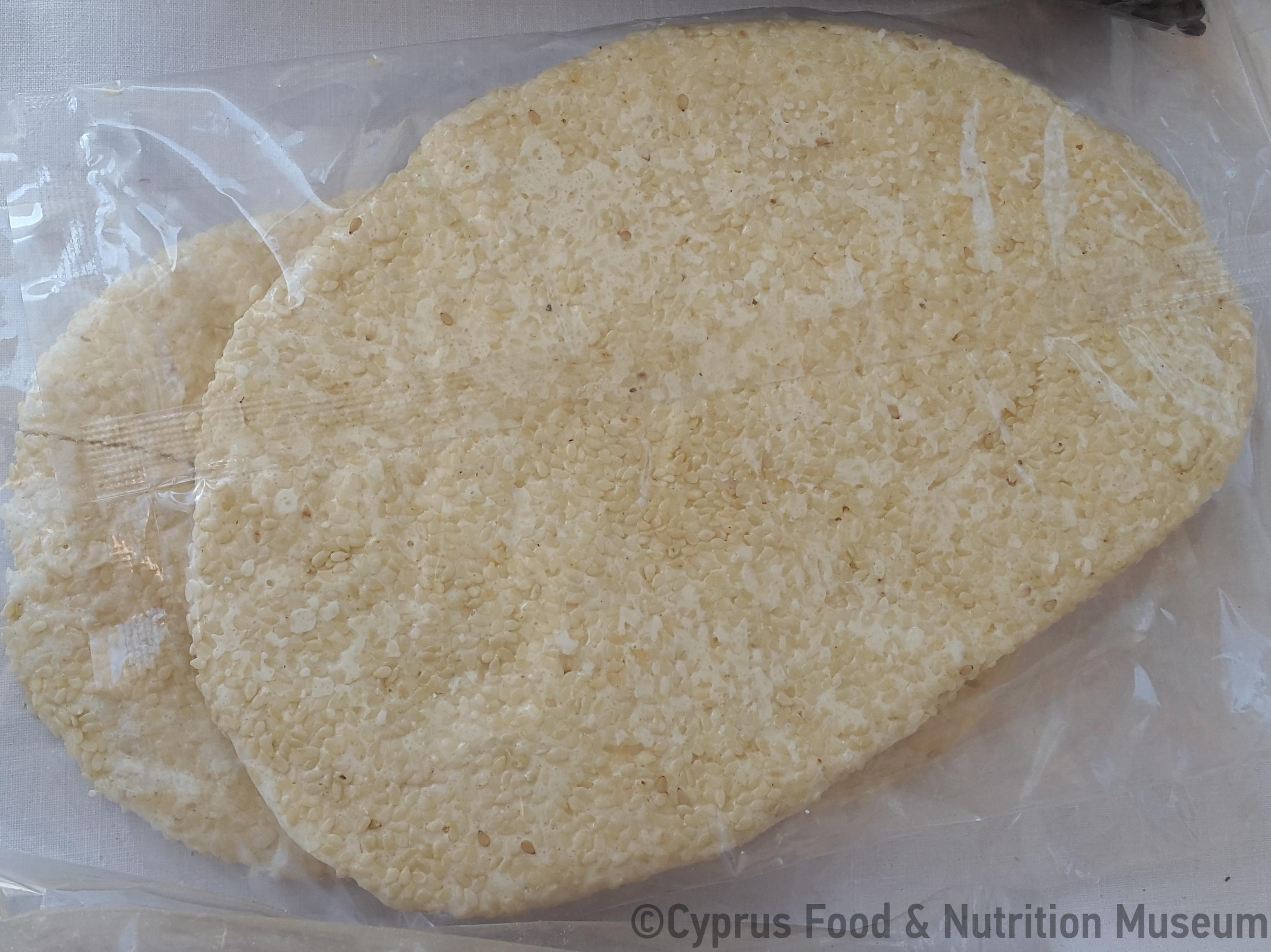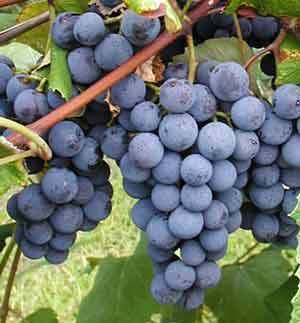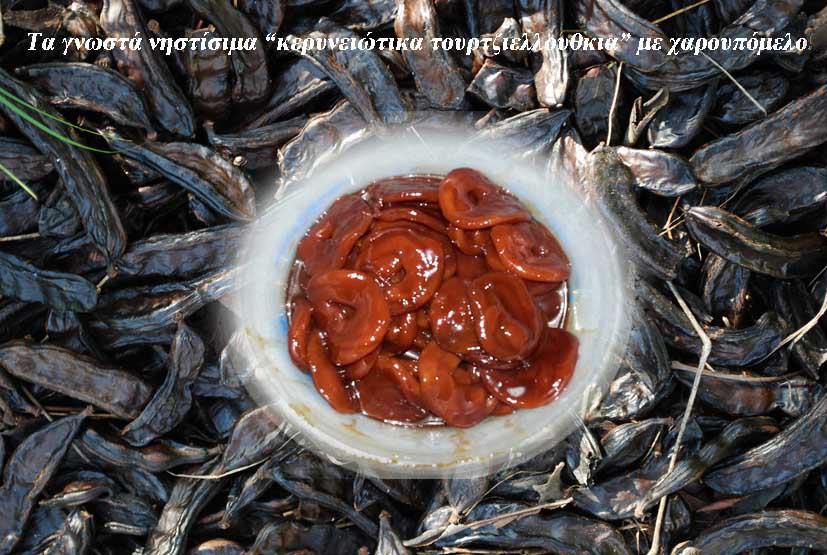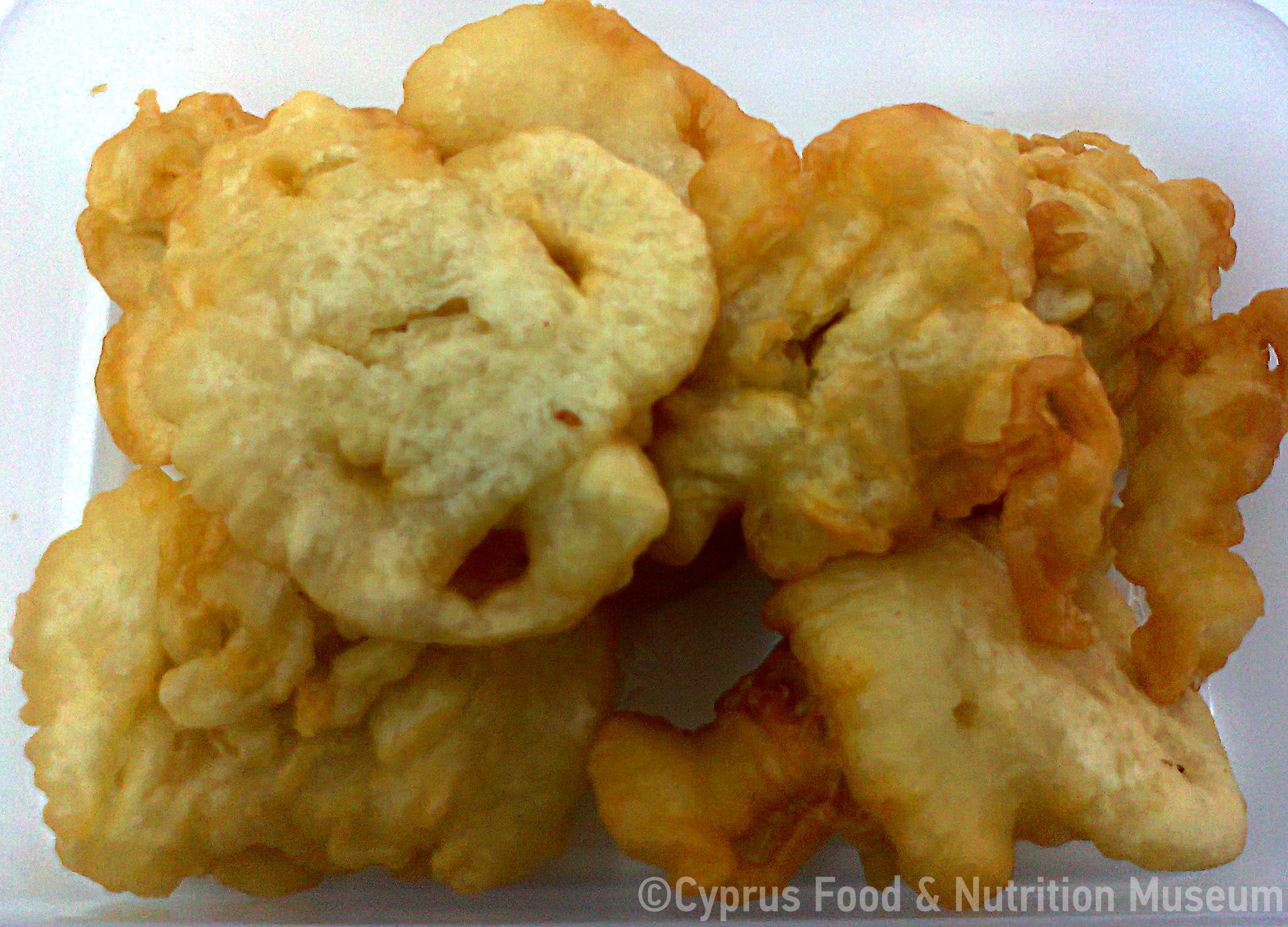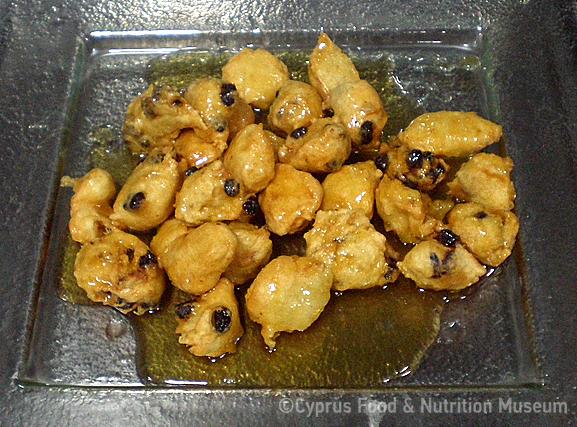Biscuits, shaped like hoops, boiled in water and dipped in epsima. “In the old days we used to prepare these biscuits when the grapes were ripe. We would collect the grapes from the vineyard and make epsima, that is, from September to November.” (Marina Kattou, Vouni, Limassol).
Name - Recipe
Κουλουράκια με πετιμέζι. Biscuits, shaped like hoops, boiled in water and dipped in epsima. They were made with simple dough (flour and water). They were immersed for a while in a pot of boiling water and then poured over with epsima ( Kythraiotou 2013, 45).
They were called terziellouthkia because of their shape which referred to krikelli (in Greek), terželli in the Cypriot dialect and means hoop (Kythraiotou 2010).
They are also found under the name koullourouthkia or even loullouthkia in Karpasia. In Kampos and Tsakkistra they were called varvarouthkia, because they were made on the day of the feast of Agia Varvara (Kythraiotou 2013, 11, 45).
See recipe for loullouthkia in the recipes section
Version A
1 kg of village flour
3 glasses of water
1/3 cup peanut oil
1 tsp salt
1/2 bottle of epsima
Version B
1 kg of flour
2-3 glasses of water
Epsima
A little oil
Version C
2 cups of village flour
1/5 teaspoon salt
1 cup of epsima
½ cup water
Version A
In a basin, sift the flour. pour in the oil, water and add a teaspoon of salt and knead. When it is well kneaded, form a ball and wrap it in plastic so as not to dry it out. Allow the dough to proof for about 2 hours. Cut a piece of dough and roll it thin and long like a snake. When it's thin enough, cut into pieces and form hoops. Bring water to a boil in a small saucepan. Throw the hoops in to boil. When they are boiled, pour off the water (use a colander). Put the epsima in the saucepan and bring it to a boil. Place the hoops in to boil for 10 minutes.(Marina Kattou, Vouni, Limassol).
Version B:
In a basin add the flour and slowly add the water and oil while kneading. When the dough does not stick to your hands, it is ready. Then, make small thin strips and then roll them into a circle (spiral); one end of the strip will be inside of the circle and the other one on the outside. After you are done with the biscuits, boil them in water (add some baking soda if you want). Once they are boiled, drain them and put them in a separate saucepan with the epsima to boil. The biscuits are eaten immediately because they can't be stored. (Spiroula Christodoulou, Potamiou, Limassol)
Version C
Mix the salt with the flour, add the water and knead very well. The dough should be smooth and not firm, but moderately firm. Cut it in small pieces and cover it. Shape the dough into strings of 10 cm long and ½ cm thick and make hoops. Join the edges of each one well. Place the hoops in plenty of boiling water and when they start to rise to the surface, leave them for about 12 more minutes to boil. In another pot, bring the epsima to a boil adding ½ cup of water. Using a slotted spoon, transfer the hoops to the pot and let them boil for a while, stirring them until they get some taste like syrup. Taste them and when they are ready, serve them on deep plates with a little bit of syrup. If you like, sprinkle them with a few grated walnuts or almonds. They should not be overcooked as they will firm up. ((Kythraiotou 2010. Kythraiotou 2013, 65)
Boiling.
In some villages, they cook the biscuits by boiling them together with the epsima (Spyroula Christodoulou, Potamiou, Limassol). Carob syrup can be used instead of epsima (Kythraiotou 2010).
Functional and symbolic role
In the past, they used to be prepared more often during the harvest season. Now they are prepared more often made during fasting periods (Marina Kattou, 65 years old from Vouni Limassol).
They were usually consumed during fasting periods when oil consumption was not allowed (Kythraiotou 2013, 45).
The Christian calendar, which often meets the annual cycle of the changing of the seasons, also becomes a reason for preparing and sharing sweets. I will provide some typical examples of sweets which, according to Kypri and Protopapa, were distributed by the celebrants on the day of some Saints' feast: On Saint Savvas day they would make teržellouthkia in Lithrangomi. They would even call the Saint, teržellan." They used to make and still make teržellouthkia for Nikolovarvara, i.e. for the feasts of Saints Barvara and Nikolas, in the village of Kampos in Tsakkistra (Kythraiotou 2010).
In Marathasa they used to make težellouthkia with epsima during Lent, especially on days when they did not eat oil or on various feasts of saints, such as Saint Savvas, Saint Nikolas or Saint Barvara ("Kythraiotou" 2013, 11).
Teržellouthkia were made after grape harvest because it was believed that this was a blessing for the production of grapes. As the dough is wrapped in circles, so it was believed that the grapes would grow (Spyroula Christodoulou, Potamiou, Limassol).
Additional information and bibliography
This treat is common in Vouni and other semi-mountainous villages of Limassol, in the villages of Pitsilia, Commandaria, Krasohoria, Laona, Kathikas and Vouni Panagias Ambelitis (Marina Kattou, 65 years old from Vouni Limassol).
Extract from an interview with Mrs Marina Kattou:
"Question: Were there any special occasions when biscuits with epsima were prepared for? Any customs associated with their preparation? Answer: We used to make biscuits with epsima when the grapes were ripe. We used to collect them from the vineyard and make epsima. That is, their season was from September to November, and even December. That doesn't mean we wouldn't make them in the other months.
Question: Where did you learn the recipe? Answer: From my mother and from some of our neighbours who would help with baking.
Question: Did you make any changes-modifications to the recipe ? Answer: No I did not change the recipe. In the old days we didn't have machines to press the grapes. We used to press them with our hands. We also used our feet to press them to get the grape juice to flow, and we would pour the juice into the bronze pot to boil it and clean it.
Question: Is it a local recipe, where do they make it? Answer: We make it in Vouni but they make it in other villages that have vineyards.
Question: How often do you now make biscuits with epsima? Answer: Mostly, during the fasting period.
Question: How often did you use to make them previously? Answer: During the winter months when we had plenty of epsima and we would eat them hot as soon as they were cooked."
(Marina Kattou, 65 years old from Vouni Limassol)
Kythraiotou, F. (2010).'Sweets in Cypriot life, honey, epsima, carob syrup and sugar', Food: a reason for a relationship, University of Nicosia Publications, Nicosia.
Kythraiotou, F. (2013). Marathasa Gastronomic Guide, Ministry of Education and Culture - Pedagogical Institute, Nicosia.
Oral testimonies: Marina Kattou, 65 years old from Vouni Limassol. Recording: Zenovia Charalambous, October 2010. Edited by Stalo Lazarou.
Spyroula Christodoulou, Potamiou, Limassol. Recorded by Maritsa Christodoulou, 2010.
Florentia Kythraiotou, Zenovia Charalambous, Maritsa Christodoulou / Stalo Lazarou, Petroulla Hadjittofi

